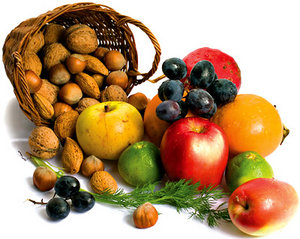In recent years, researchers have come to appreciate that our diet can substantially influence the inflammatory state within our body. This view of inflammation is different than the standard view that characterizes inflammation as a response to injury, such as a sprained ankle, which then heals naturally and the inflammation goes away.
The new view of inflammation, developed over the past 10 years, is that it is a generalized state within the circulatory and immune system perpetuated by poor diet. The outcome of this is the dietary promotion of arthritis, osteoporosis, heart disease, cancer, Alzheimer’s disease and most other chronic diseases. We should call this “dietary trauma,” as it leads to the development of biochemical changes similar to physical injury. The difference is that, for most people, dietary trauma occurs every time they eat, three or more times each day, every day.
In most cases, the outcome of dietary trauma is not noticed for years. It takes years to develop arthritis and other chronic diseases, so we don’t usually associate a poor diet with disease expression. This allows us to easily deny such an association between diet, inflammation and disease. Thus, developing an awareness or mindfulness about eating is very important to help influence a behavioral change in our eating habits.
Foods That Promote Inflammation

Refined carbohydrates in the form of sugar, sweeteners and flour produce inflammatory responses, as do refined oils and obese (fatty) meat. A surprise to many is that even whole grains and legumes (beans) can promote inflammation.
With the above in mind, consider that the average American consumes about 10 percent of calories from dairy products, 20 percent from refined sugar, 20 percent from refined grains, 20 percent from refined oils and 2 percent from alcohol. The biggest problems clearly are the sugar, grains and oils. Approximately another 20 percent of calories come from obese meat, which is the fatty meat from domestic animals that live a sedentary life in feedlots, where they are fed a tonnage of grains/corn instead of grass/pasture. The remaining 10 percent of calories might be fruits and vegetables.
Foods That Prevent Inflammation
Rather than listing all the foods and snacks that should be avoided, let’s focus on the foods that reduce inflammation. Researchers recently characterized a diet that offers preventive benefits for heart disease, called the “polymeal,” which is consistent with the PaleoDiet, the traditional low-starch Mediterranean diet and the anti-inflammatory diet.
A reasonable recommendation is for 80 percent to 100 percent of our calories to come from vegetables, fruit, raw nuts, potatoes, and either lean or omega-3 protein sources including fish, lean meat, skinless chicken, wild game, grass-fed animals and omega-3 eggs. Spices such as garlic, ginger, turmeric, oregano and the other popular spices are all anti-inflammatory. The best oils/fats to use in moderation are extra-virgin olive oil, coconut oil and butter.
Our focus should be on correcting the 80 percent of calories that come from sugar, refined grains, oils and obese meat. Worrying about yogurt, the occasional bran muffin, a cup of coffee, etc., has little influence compared to the tsunami of inflammation created by the 80 percent of calories derived from inflammatory foods.
Another key to reducing dietary trauma and inflammation is to eat appropriate amounts for your body. In general, overeating leads to an inflammatory response.
Avoid Dietary Extremism

If you currently snack on bags of inflammation and regularly do “drive-through self-shootings” at fast-food restaurants, you likely will view a life of eating anti-inflammatory foods as somewhat extreme. In actuality, the anti-inflammatory foods described above are not extreme at all and are completely consistent with our biochemical and physiological needs.
If you’re eating 80 percent or more of your calories from sugar, flour/grains, refined oils and obese meat, you’re a dietary extremist. For many, the mere thought of giving up bread and pasta is too much to bear.
On the other hand, assuming 85 percent to 90 percent of your calories are anti-inflammatory, have fun with the remaining 10 percent to 15 percent of calories borne of foods from the dark side. Don’t become an anti-inflammatory diet extremist and make eating healthy a stressful event.
By David Seaman, DC, MS, DABCN